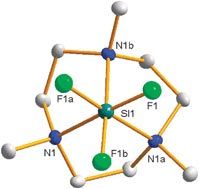New pathways found for biotechnological degradation of industrial waste
Microorganism breaks down phenol under extreme conditions
Scientists led by Dr Meina Neumann-Schaal of the Leibniz Institute DSMZ-German Collection of microorganisms and Cell Cultures GmbH in Braunschweig, Lower Saxony, have characterised the breakdown of phenol by Saccharolobus solfataricus. Using methods from the fields of metabolomics and transcriptomics, the researchers demonstrated that the microorganism is capable of using phenol as sole carbon source for its growth. The group was also the first to identify the complete degradation pathway of this toxic compound.

Symbolic image
Foto-Rabe, pixabay.com
Phenol degradation by Saccharolobus solfataricus
S. solfataricus is classified as archaea, a group of microorganisms that together with the better known group of bacteria constitute the so-called prokaryotes. Saccharolobus solfataricus prefers extreme environmental conditions with temperatures of 80°C and acidic surroundings with a pH of 3.5. The researchers’ experiments showed that S. solfataricus is able to survive on phenol as sole carbon source. To this end, the microorganism breaks down the toxic organic compound and uses the now available carbon to build up biomass. Until now, the metabolic pathway to achieve this purpose had not been described in detail. Based on their findings, Dr Neumann-Schaal and her team could not only determine the sought-after metabolic pathway, but were also able to postulate enzymes involved in the various reaction steps necessary for the degradation of phenol.
Toxic agent phenol
The organic compound phenol is a chemical agent that commonly occurs as waste product in various industries, for instance the textile industry or fuel production from fossil raw materials such as carbon. Phenol is a pollutant that causes massive damage in humans and animals. In nature, phenol is for example released in low quantities in the degradation of plant material and animals.
It is already known that various bacteria and yeasts are able to break down phenol. These microorganisms occur in mesophilic environments, that is to say they live in temperatures between 20 and 45°C. However, since industrial phenol waste commonly develops under high temperatures and low pH-values, it requires a cost- and energy-intensive treatment in the sense of a cool-down and/or neutralisation process to allow the microbial degradation of phenol to begin. In addition, most phenol-degrading bacteria belong to the Pseudomonas family and are often pathogenic, i.e. harmful, to humans and the environment. And this is where the great potential of archaea comes in, explains biochemist Dr Meina Neumann-Schaal. “Using archaea such as Saccharolobus solfataricus could circumvent the problems of re-processing industrial phenol-waste and therefore save costs. We now know which enzymes and proteins are involved in phenol degradation and can therefore specifically look for these in other archaea. There might be other groups that can break down phenol even more efficiently. This is only the beginning of research in this area.”
Original publication
Original publication
Wolf J., Koblitz J., Albersmeier A., Kalinowski, J. Siebers B., Schomburg D., Neumann-Schaal M.; "Utilization of phenol as carbon source by the thermoacidophilic archaeon Saccharolobus solfataricus P2 is limited by oxygen supply and the cellular stress response"; Front. Microbiol.; 2021
Topics
Organizations
Other news from the department science

Get the chemical industry in your inbox
By submitting this form you agree that LUMITOS AG will send you the newsletter(s) selected above by email. Your data will not be passed on to third parties. Your data will be stored and processed in accordance with our data protection regulations. LUMITOS may contact you by email for the purpose of advertising or market and opinion surveys. You can revoke your consent at any time without giving reasons to LUMITOS AG, Ernst-Augustin-Str. 2, 12489 Berlin, Germany or by e-mail at revoke@lumitos.com with effect for the future. In addition, each email contains a link to unsubscribe from the corresponding newsletter.





























































